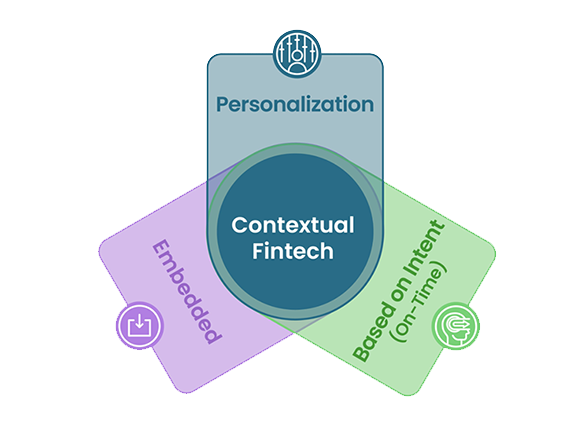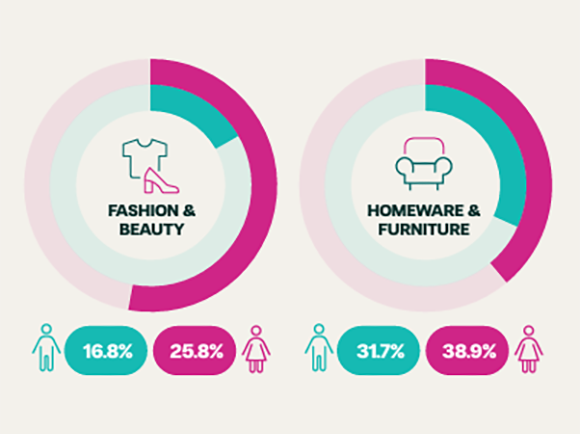4 things retail finance providers get wrong about consumer journeys

Despite its importance, some lenders and banks providers make fatal mistakes when creating consumer journeys for retail finance. Journeys are often poorly designed, inflexible, long and spare little thought for in-store experiences.
In this article, we explore four things retail finance providers get wrong, so you know what to look for when launching your own retail finance solution.
But first – what is a consumer journey?
A ‘consumer journey’ is what insiders use to refer to the ‘consumer decision making process’. It is essentially a road-map of the customer’s behaviour throughout a purchase.
In retail finance, it starts with an awareness of the embedded finance products on offer. They could find these advertised in-store, online or over the phone.
It then moves on to the research stage where the customer gathers information about the finance products on offer. They may compare interest rates, term lengths and deposits, before considering their eligibility.
The customer then makes a decision. Here, they are either approved by the lender (as is normally the case) or wait to be approved manually (which is known as a referral).
Once approved, the customer moves to the purchase stage and signs the contract, pays the deposit (if there is one) and activates the finance plan.
The merchant receives payment as per the agreement, and there may be post-purchase activity like refunds and cancellations.
Only through a thorough understanding of this journey, can retail finance providers offer a best-in-class experience. So what do they normally get wrong?
1. Poorly designed journeys that don’t convert
A little bit of friction in the journey is a good thing; it helps to remind your customers they are making a credit application. But too much can hurt your conversion rate. Lenders should be aiming for 90%+ of accepted consumers to complete their purchase.
The trouble is, many lenders, although experienced in consumer finance, are often new to retail finance, which means they struggle to create a customer journey that converts. They copy and paste designs from other departments and expect them to work, missing key concepts along the way.
Research shows finance applications should take no longer than five minutes to complete, while decisions for a referred application (when a lender must manually check an application for approval) should take no longer than three. A poor design can put a 40% dent in conversion rates, but without the right analytical tools in place, it can be difficult to understand what’s going wrong and how it can be fixed.
Your journey needs to be intuitive, seamless and optimised to handle ‘edge cases’. If your journey is too long, shoppers drop off and your conversion rate will suffer.
The solution? A provider with a technology toolbox. At Divido use a suite of analytical and telemetry tools to track, measure and improve conversion rates throughout your customer journey. And we find ways to speed things up, too; Loqate helps to validate your customer address and bank account number for direct debits.
2. No in-store journey
Consider the fact that more than 50% of consumers either look at a product in-store then buy it or online, or vice versa. Consumers make an average of eight touchpoints with a brand before a purchase, and only 20% of retailers think physical stores won’t matter in the future.
Now consider that the majority of retail finance purchases are for items that need to be experienced, touched and played with. The top three sectors for retail finance are furniture and homeware (36%), electronics (31%) and white goods (24.3%) and the average retail finance credit agreement is £2,000.
It seems obvious, then, that your customer journey should cater for both in-store and digital journeys; it must be holistic, consistent and seamless across every touchpoint. Yet retail finance providers often neglect their in-store experience and provide a digital-only experience, which misses a key interaction.
If you’re offering interest-free credit, you must tell your customers at every reasonable opportunity. In furniture retail, for example, the difference between a cash order and a finance order is around £1,000. If you tell your in-store customers up-front “Did you know you can borrow up to three years with interest-free credit?”, you have the opportunity to take that customer from a £500 purchase, to a £1,500 purchase. They might start shopping for a footstool to go with their new armchair, and a coffee table to match.
The point is this: there is no point in offering finance if you’re not promoting it. Ignoring this simple fact can significantly harm your revenues.
What’s the solution? A seamless in-store experience with the Divido Merchant Portal. Sales staff can access the portal with any web browser to find finance plans and initiate the application, so consumers get the same great service whether online, in-store, or over the phone.
3. Too hard to make changes
Retail finance platform providers often work with banks on highly customised projects which are hard coded.
That’s great to begin with – lenders get exactly what they asked for; an embedded lending journey. The project is complete, handed over to the internal team and the platform provider who developed it walks away.
But then a new piece of regulation is introduced. A tweak to consumer credit law now means the banks must integrate their application journeys with the government’s credit database. This may sound like a small change, but integrating with a new third party service is something that can take banks many months to complete in-house
This is where the cracks start to show.
The solution was hard coded so it’s not a quick fix, and the team who worked on the initial project have left the business. The bank needs to start a new project to implement the changes, which is complicated, costly, and time consuming. They muddle through. Then their conversion rates take a hit and they can’t figure out why. They need to measure why their performance has dropped and then tweak the journey to boost conversion. Their customer experience, reputation and revenues take a beating. All for a small tweak in regulation – one that should have been anticipated and could have been avoided. In all, it takes a year to figure things out.
What’s the solution? A flexible, strategic partner that works with you. Our SAAS platform enables upgrades, the fast adoption of new features and seamless integrations without interruption or delay. We helped one major bank implement changes to Finnish consumer credit law in 2023. What most providers would struggle to fix in a year – changes to the journey and re-optimising conversion rates – we fixed in under a month.
4. No soft-credit check
A soft-credit check builds trust between you, as the lender, and your customers. They’re a routine procedure in the UK and help to dramatically reduce application drop-offs and enhance conversion rates. Even customers with good credit will think twice about starting an application if there is no soft-search (as is the case in Europe where instant credit checks are harder to come by) because of potential damage to one’s credit score.
Some lenders offer the basics; a simple check that provides the likelihood a customer will be approved. They may offer guaranteed pre-approval to increase the chances a customer proceeds.
But more needs to be done. Customers with strong credit history can be rejected if they apply for finance slightly outside their reach. If they’ve applied for finance that’s £20 per month too much, for example, they’ll be rejected. The trouble is they often aren’t told why they’ve been rejected, which leads to frustration. Retail finance providers can do better.
What’s the solution? Advanced soft-search features like Divido’s Finance Matcher give customers a second-chance if they’re not approved the first time around. Instead of being outright rejected, the customer is provided a list of alternative credit options to choose from. They may be asked to pay a bigger deposit or extend the agreement to reduce the monthly repayments, which dramatically enhances the customer’s experience, sales and conversion rates.
The bottom line
Building a market leading customer journey is not easy. There are pitfalls to avoid and choices to make.
As a lender, whether you should build in-house or use a third-party vendor is not a binary decision. There will always be some level of outsourcing when starting retail finance. It’s up to you to decide which parts you will build in house, and which you look for support on.
The optimal solution is to find a retail finance partner to work with you on your consumer journeys, one whose sole focus is to upgrade and improve your customer experience and conversion rates. A partner that understands your needs, and develops a solution that is flexible, configurable and market-leading, so it works now and into the future.
At Divido, we’ve worked with some of Europe’s biggest and well-known banks to deliver best-in-class retail finance consumer journeys.
You might also
be interested in
Keen to know more?








